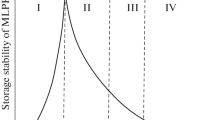Abstract
Wood is one of the most sustainable, naturally growing materials that consist mainly of combustible organic carbon compounds. Since plywood are widely used nowadays especially in buildings, furniture and cabinets. Too often the fire behavior of ply-board may be viewed as a drawback. Amino-plastic based thermosetting resin adhesives are the important and most widely used in the plywood panel industries. The fire retardant property of wood panel products by adding animal glue as an additive in the form of MGF resin and used as substitute of melamine for manufacture of plywood. Environment concerns and higher cost of petroleum based resins have resulted in the development of technologies to replace melamine partially by biomaterials for the manufacturing of resin adhesive. Natural bio-based materials such as tannin, CNSL (cardanol), lignin, soya etc. are used as partial substitution of melamine. This article presents the development of melamine-animal glue formaldehyde resin as plywood binder. About 30 % melamine was substituted by animal glue and optimized. The different physico-mechanical and fire retardant property properties tested as per IS: 1734-1983 and IS: 5509-2000 respectively are quite satisfactory. The production of adhesive from melamine with compatible natural proteinous material is cost effective, eco-friendly and enhance the fire retardant property.







Similar content being viewed by others
References
Anon, World Agricultural Production. http://www.thebioenergysite.com/articles/432/worldagriculturalproduction-september-2009
A.L. Lambuth, Protein adhesive for wood, in Hand Book of Adhesive Technology, 2nd edn., revised and expanded (Taylor and Francis Group LLC, 2003)
A.J. Allen, J.J. Marcinko, T.A. Wagler, A. Sosnowick, Investigations of the molecular interactions of soya based adhesives. For. Prod. J. 60(6), 534–540 (2010)
J. Huanga, Development and Characterization of New Formaldehyde-Free Soya Flower Based Adhesive for Making Interior Plywood (Oregan State University, 2007). http://Ir.library.oreganstate.edu/xmlui/handle/1957/4929
C. Marquie, Chemical reaction in cotton seed protein cross linking by formaldehyde, glutaraldehyde and glyoxal for the formation of the protein films with enhanced mechanical properties. J. Agric. Food Chem. 49, 4676–4681 (2001)
Animal Glue Growth with L.D. Davis 1936–1951. LD Davis Industries. Retrieved 8 Sept 2011
X.Z. Sun, Adhesive From Modification Soya Protein. USA patent 20050116793 (2005)
C.R. Frihart, J.M. Wescott, A.E. Traska, Dispersion adhesive from soya flower and MELAMINE formaldehyde, in Proceedings of the 30th Annual Meeting of the Adhesion Society, (2007), pp. 150–152
J.M. Wescott, C.R. Frihart, A. Traska, High soya containing water durable adhesives. J. Adhes. Sci. Technol. 20(80), 859–873 (2006)
Anon, Specification of Plywood for General Purpose (Bureau of Indian standard IS: 303, New Delhi, 1989)
A. Sarkar, P. Naha, J. Nag, Development of Suitable Economic Adhesive Based on Synthetic Resin as Well as Proteinous Materials and Their Application in the Production of Tea-Chest Plywood. IPIRTI research report No. 07 (1985)
S.S. Zoolagud, T.S. Rangaraju, T.R. Narayanaprasad, K.K. Mohondas, Study on the Suitability of De-Oiled Soya Bean Flower and Jatropha Seed Cake Flower as Extender for UF and MF Resin Adhesives for Bonding MR and BWR Grades of Plywood. IPIRTI research report No. 97 (1994)
J.M. Wescott, C.R. Frihart, Striking Power from Soya Beans. (2011). http://www.soci.org/chemicalsandindustry/CnI-data/2011/3
J. Bjorksten, Cross linkages in protein chemistry. Adv. Protein Chem. 6, 353–358 (1951)
H. Yang, Z. Shu, The extraction of collagen protein from pigskin. J. Chem. Pharm. Res. 6(2), 683–687 (2014)
X. Liu, Modification of soya protein for wood adhesive using a mussel protein as a model. Macromol Rapid Commun 25, 1835–1838 (2004)
R. Mayer, The Artist’s Handbook of Materials and Techniques (Viking, New York, 1991), p. 437. ISBN 0-670-83701-6
Anon, Specification of Synthetic Resin Adhesive for Plywood (MELAMINE and Amino-Plastics). (Bureau of Indian standard IS: 848, New Delhi, 2006)
E.H. Herron, The Looming Crisis in Worldwide Oil Supplies. (2000). www.petroliumequities.com/oilsupplyreport.htm
M.D. Hill, J.B. Wilson, Particleboard strength as affected by unequal resin distribution on different particle fractions. For. Prod. J. 28(11), 44–48 (1978)
P. Naha, S. Sen, J. Nag, Development of Jute Overlays for Panel Products, IPIRTI Research Report, No. 131 (2004)
L.A. Lowden, T.R. Hull, Flammability Behaviour of Wood and a Review of the Methods for Its Reduction
A.M. Pereyra, C.A. Giudice, Flame-retardant property impregnates for woods based on alkaline silicates. Fire Saf. J. 44, 497–503 (2009)
E. Terzi, S.N. Kartal, R.N. White, K. Shinoda, Y. Imamura, Fire performance and decay resistance of solid wood and plywood treated with quaternary ammonia compounds and common fire retardant property. Eur. J. Wood Prod. (2009)
A.P. Mouritz, A.G. Gibson, Fire Properties of Polymer Composite Material (Springer, Berlin, 2006), pp. 59–101, Chap 3
N. Ayrilmis, Z. Candan, R. White, Physical mechanical and fire properties of oriented strand board with fire retardant property treated veneers. Holz. Roh. Werkst. 65, 449–458 (2007)
IS: 1734-1983 (Part 1 to 20), Method of Test for Plywood (Bureau of Indian Standards, New Delhi)
L.G. Esteban, P.D. Palacios, F.G. Fernandez, J. Ovies, Mechanical properties of wood from the relict Abies pinsapo. For. Prod. J. 59(10), 72–78 (2009)
Acknowledgments
The authors express their gratitude to Indian Council of Agricultural Research, New Delhi for the financial assistance for this project and MESCoS symposium to provide only a presentation on the subject.
Author information
Authors and Affiliations
Corresponding author
Rights and permissions
About this article
Cite this article
Khatua, P.K., Dubey, R.K., Roymahapatra, G. et al. Development of Self Fire Retardant Melamine-Animal Glue Formaldehyde (MGF) Resin for the Manufacture of BWR Ply Board. J. Inst. Eng. India Ser. D 98, 195–202 (2017). https://doi.org/10.1007/s40033-016-0120-1
Received:
Accepted:
Published:
Issue Date:
DOI: https://doi.org/10.1007/s40033-016-0120-1



